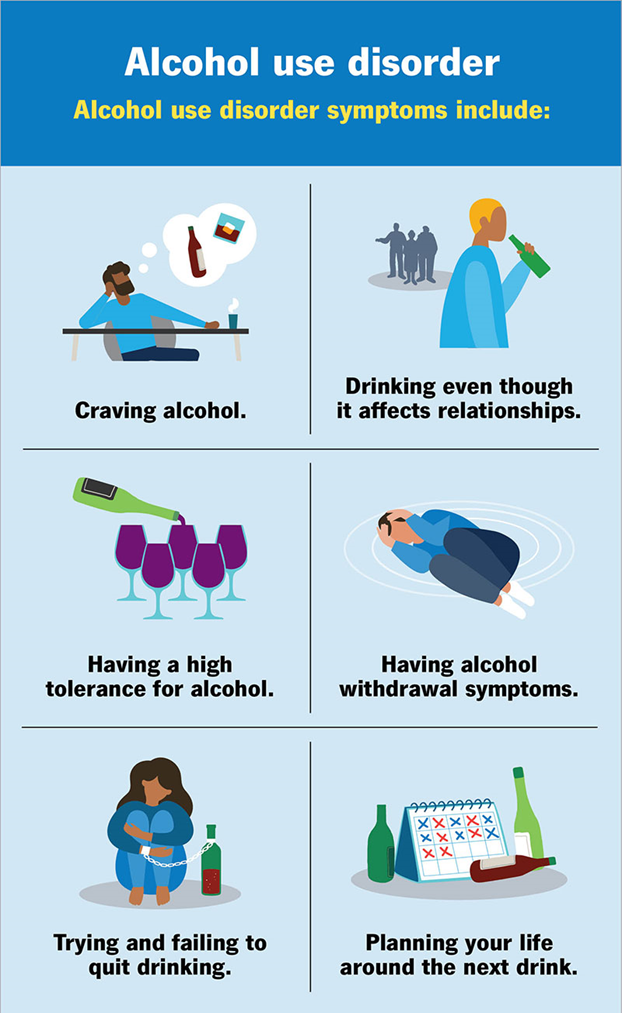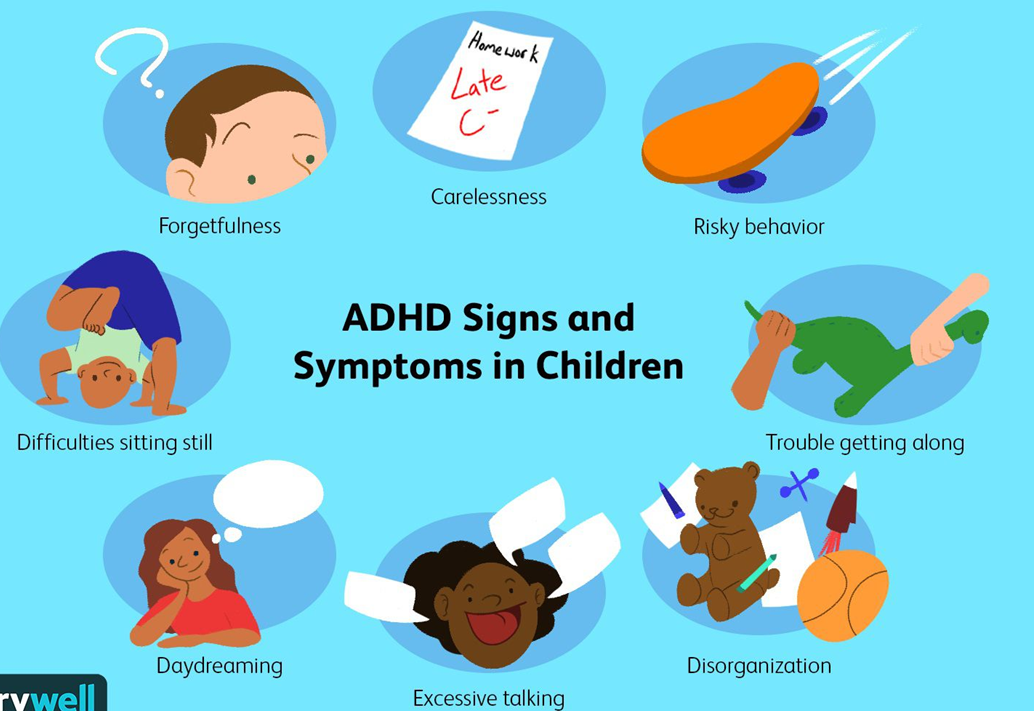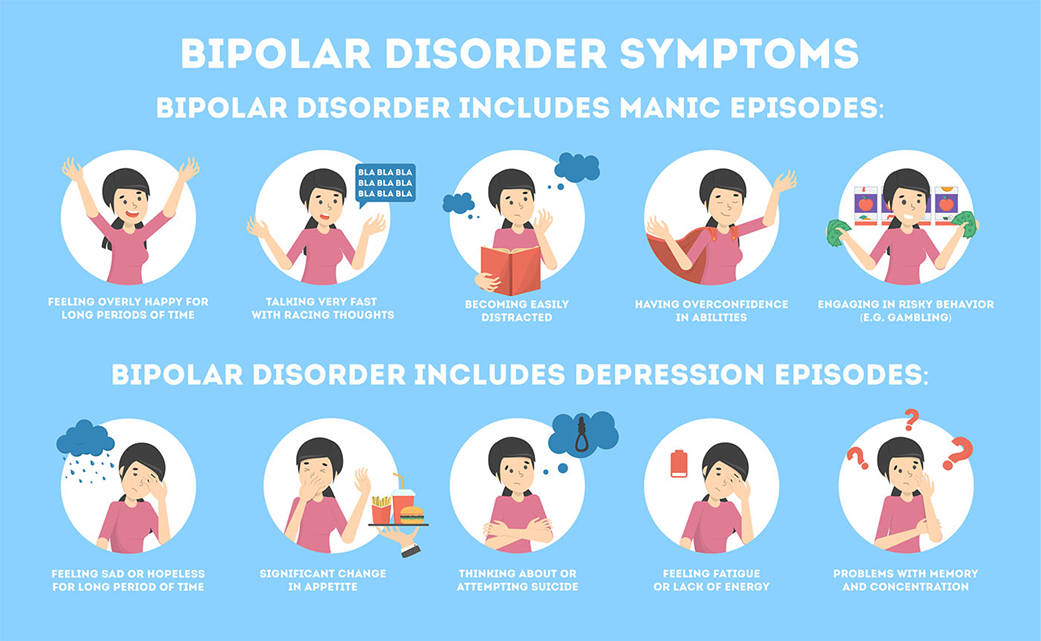N200 Mental Health Exam 2
ATI N200 Mental Health Exam 2
Total Questions : 62
Showing 10 questions Sign up for moreThe nurse is educating clients about recovery from alcohol abuse. Which statement by the client indicates that learning has occurred?
Explanation
Choice A Reason:
This statement indicates that the client understands the nature of recovery from alcohol abuse. Recovery is indeed a lifelong process that involves continuous effort and commitment. Recognizing that recovery comes in steps shows that the client is aware of the ongoing nature of the process and the need for sustained effort and support. This understanding is crucial for successful long-term recovery.

Choice B Reason:
This statement is incorrect because it reflects a misunderstanding of the recovery process. Detoxification is just the first step in recovery, and it involves removing alcohol from the body. However, recovery involves much more than just detoxification. It includes ongoing therapy, support groups, lifestyle changes, and coping strategies to maintain sobriety and prevent relapse. Therefore, thinking that recovery is complete after detoxification is a misconception.
Choice C Reason:
This statement is also incorrect because it suggests that the goal of recovery is merely to decrease drinking. The goal of recovery from alcohol abuse is to achieve and maintain sobriety, not just to reduce alcohol consumption. Effective recovery involves abstaining from alcohol, addressing the underlying issues that led to alcohol abuse, and developing healthy coping mechanisms and support systems.
Choice D Reason:
While Al-Anon can indeed assist in the recovery process, this statement alone does not indicate that the client has fully understood the nature of recovery. Al-Anon is a support group for friends and family members of people with alcohol use disorder, and it can provide valuable support and resources. However, recognizing the lifelong and step-by-step nature of recovery is a more comprehensive indication of learning.
A client with bipolar disorder is refusing to take mood stabilizers due to weight gain. To increase the patient’s adherence to a medication regimen, what measures could the nurse teach the client? (SELECT ALL THAT APPLY)
Explanation
Choice A Reason:
Have cut vegetables prepared for a snack instead of chips or cookies. This choice is correct because it encourages healthier eating habits, which can help manage weight gain associated with mood stabilizers. Vegetables are low in calories and high in nutrients, making them a better alternative to high-calorie snacks like chips and cookies. This can help the client maintain a healthy weight while adhering to their medication regimen.
Choice B Reason:
Extended-release forms of medications have fewer side effects when dissolved in water. This choice is incorrect. Extended-release medications are designed to be released slowly over time and should not be dissolved in water. Dissolving them can alter their release mechanism, leading to potential side effects and reduced efficacy.
Choice C Reason:
Weigh yourself once in the morning and once in the evening using the same scale. This choice is incorrect. Weighing oneself multiple times a day can lead to unnecessary anxiety and obsession over weight fluctuations, which are normal throughout the day. It is generally recommended to weigh oneself once a week at the same time of day for a more accurate measure of weight trends.
Choice D Reason:
Drink flavored water instead of soft drinks. This choice is correct because it promotes healthier beverage choices. Soft drinks are high in sugar and calories, which can contribute to weight gain. Flavored water, on the other hand, can be a refreshing and low-calorie alternative, helping the client manage their weight while staying hydrated.
Choice E Reason:
Walk 30 minutes per day, 5 days per week. This choice is correct because regular physical activity is essential for maintaining a healthy weight and overall well-being. Walking is a low-impact exercise that can help burn calories, improve mood, and enhance adherence to a medication regimen by reducing the side effects of weight gain.
Explanation
The correct answer is a. The client’s behavioral change is expected after the time period of medication.
Choice A Reason:
This choice is correct because fluoxetine, a selective serotonin reuptake inhibitor (SSRI), typically takes about 4 to 6 weeks to start showing its full effects. The client’s statement, “I feel like a great weight is off my chest,” indicates a positive response to the medication, which aligns with the expected timeline for SSRIs to improve mood and alleviate symptoms of depression. This behavioral change suggests that the medication is working as intended, helping to lift the depressive symptoms.
Choice B Reason:
This choice is incorrect and concerning. While it is true that some individuals may experience a temporary increase in energy before their mood improves, which could potentially increase the risk of suicide, the client’s positive statement does not necessarily indicate suicidal planning. It is important for healthcare providers to continuously monitor for any signs of suicidal ideation, but in this context, the client’s statement more likely reflects an improvement in their depressive symptoms.
Choice C Reason:
This choice is incorrect because there is no indication that the medication dosage should be decreased or that a mood stabilizer should be added. Fluoxetine is generally well-tolerated, and the client’s positive response suggests that the current dosage is effective. Mood stabilizers are typically used in the treatment of bipolar disorder, not major depressive disorder, unless there is a specific indication for their use.
Choice D Reason:
This choice is incorrect and indicates a misunderstanding of serotonin syndrome. Serotonin syndrome is a potentially life-threatening condition caused by excessive serotonin activity in the brain, often due to drug interactions or overdose. Symptoms include agitation, confusion, rapid heart rate, and high blood pressure4. The client’s statement of feeling relieved does not align with the symptoms of serotonin syndrome, which are generally severe and require immediate medical attention.
A nurse is teaching the parents of a child who has ADHD about methylphenidate. Which of the following statements should the nurse include in the teaching?
Explanation
The correct answer is d. Restrict your child’s intake of caffeine while she is taking this medication.
Choice A Reason:
This statement is incorrect. Methylphenidate does not typically increase saliva production. In fact, it is more commonly associated with dry mouth as a side effect. Therefore, informing parents that the medication might increase saliva production would be misleading and not based on the known side effects of the drug.
Choice B Reason:
This statement is incorrect. Methylphenidate should generally be administered in the morning or early afternoon to avoid insomnia, as it is a stimulant and can interfere with sleep if taken too late in the day. Administering the medication at bedtime would likely cause sleep disturbances, which is counterproductive for managing ADHD symptoms.
Choice C Reason:
This statement is incorrect. Methylphenidate is more commonly associated with weight loss rather than weight gain. The medication can suppress appetite, leading to reduced food intake and potential weight loss. Therefore, it is important to monitor the child’s weight and nutritional intake while on the medication, but weight gain is not a typical concern.
Choice D Reason:
This statement is correct. Caffeine is a stimulant and can exacerbate the side effects of methylphenidate, such as increased heart rate, jitteriness, and anxiety. Therefore, it is advisable to restrict the child’s intake of caffeine while taking this medication to avoid these potential interactions and side effects. This includes limiting consumption of caffeinated beverages like coffee, tea, and certain sodas.

A nurse is preparing to administer fluoxetine 40 mg PO daily. The amount available is fluoxetine 20 mg/mL. How many mL should the nurse administer?
(Round the answer to the nearest whole number. Use a leading zero if it applies. Do not use a trailing zero.)
Explanation
Step 1: Identify the dosage required and the concentration available.
- Required dosage: 40 mg
- Available concentration: 20 mg/mL
Step 2: Calculate the volume to be administered.
- Volume to be administered = Required dosage ÷ Available concentration
- Volume to be administered = 40 mg ÷ 20 mg/mL
Step 3: Perform the division.
- Volume to be administered = 40 ÷ 20
- Volume to be administered = 2 mL
Step 4: Round the answer to the nearest whole number (if necessary).
- Volume to be administered = 2 mL (no rounding needed)
The nurse should administer 2 mL.
Explanation
Choice A Reason: Childhood Depression
Childhood depression is characterized by persistent sadness, irritability, and a lack of interest in activities. While it can lead to behavioral issues, it does not typically include the aggressive and antisocial behaviors described in the scenario. The symptoms of childhood depression include changes in sleep patterns, appetite, and energy levels, but these do not align with the client’s history of running away and abusive behavior towards parents.
Choice B Reason: Oppositional Defiant Disorder (ODD)
ODD is marked by a pattern of angry, irritable mood, argumentative, defiant behavior, or vindictiveness. While children with ODD may be defiant and hostile towards authority figures, the behaviors described in the scenario, such as running away and engaging in illegal activities like prostitution, are more severe and align more closely with Conduct Disorder. ODD does not typically involve the violation of societal norms to the extent seen in this case.
Choice C Reason: Conduct Disorder
Conduct Disorder is characterized by a repetitive and persistent pattern of behavior that violates the rights of others or major age-appropriate societal norms or rules. This includes aggressive behavior towards people and animals, destruction of property, deceitfulness or theft, and serious violations of rules. The client’s history of running away, abusive behavior towards parents, and involvement in illegal activities like prostitution strongly suggests Conduct Disorder. This diagnosis is supported by the presence of multiple behavioral issues that are severe and pervasive.
Choice D Reason: Autism Spectrum Disorder (ASD)
ASD is a developmental disorder that affects communication and behavior. Individuals with ASD may have difficulty with social interactions, exhibit repetitive behaviors, and have restricted interests. While ASD can sometimes be associated with challenging behaviors, it does not typically include the antisocial and aggressive behaviors described in the scenario. The client’s history of running away and abusive behavior is not characteristic of ASD.
Explanation
Choice A Reason: We can call Alcoholics Anonymous (AA) and go to a closed meeting to see what happens inside.
Alcoholics Anonymous (AA) is a support group specifically for individuals struggling with alcohol use disorder. Closed meetings are typically reserved for those who identify as alcoholics and are seeking help for their own drinking problems. Family members and friends are generally not allowed to attend these meetings unless they are open meetings. Therefore, this choice does not reflect an effective understanding of the appropriate support resources available for family members.
Choice B Reason: We should wait until the client is ready to stop drinking before the family goes to support meetings.
Waiting until the client is ready to stop drinking before seeking support is not advisable. Family members can benefit from attending support groups like Al-Anon regardless of the client’s readiness to change. These groups provide emotional support, education, and coping strategies for dealing with the challenges of living with someone who has an alcohol use disorder. This choice suggests a misunderstanding of the importance of seeking support for oneself, independent of the client’s actions.
Choice C Reason: The family can go to Al-Anon meetings for support.
Al-Anon is a support group specifically designed for family members and friends of individuals with alcohol use disorder. These meetings provide a safe space for loved ones to share their experiences, gain support, and learn effective coping strategies. Attending Al-Anon meetings can help family members understand the nature of addiction, reduce feelings of isolation, and improve their own well-being. This choice reflects an accurate understanding of the appropriate support resources available for families.
Choice D Reason: Support groups are an option for the client, not the family.
This statement is incorrect because support groups like Al-Anon are specifically designed for family members and friends of individuals with alcohol use disorder. These groups recognize that addiction affects not only the individual but also their loved ones. By participating in support groups, family members can gain valuable insights, emotional support, and practical advice for coping with the challenges associated with a loved one’s addiction. This choice reflects a misunderstanding of the role and availability of support groups for families.
A client diagnosed with bipolar disorder is experiencing a severe depressive episode. Which client behavior would alert the nurse to the highest priority intervention? The client:
Explanation
Choice A Reason: Is not responding to other clients on the unit.
While a lack of response to other clients can indicate social withdrawal and isolation, which are common in depressive episodes, it does not necessarily indicate an immediate risk to the client’s safety. This behavior is concerning but does not require the highest priority intervention compared to other behaviors that may indicate a risk of self-harm or suicidal ideation.
Choice B Reason: Is refusing to take their prescribed mood stabilizer.
Refusing medication is a significant concern as it can lead to worsening of symptoms and destabilization of the client’s condition. However, this behavior does not indicate an immediate risk to the client’s safety. The nurse should address this issue promptly, but it is not the highest priority compared to behaviors that suggest suicidal ideation.
Choice C Reason: Angrily argues with another client stating, “God is dead.”
This behavior indicates agitation and potential conflict with others, which can be problematic in a clinical setting. However, it does not directly suggest an immediate risk to the client’s safety. The nurse should intervene to de-escalate the situation and provide support, but this is not the highest priority compared to signs of suicidal ideation.
Choice D Reason: States, “There is no future when you feel so depressed.”
This statement is highly concerning as it indicates feelings of hopelessness and potential suicidal ideation. Expressions of hopelessness and statements about the future being bleak are significant risk factors for suicide. The nurse should prioritize this behavior for immediate intervention to assess the client’s risk of self-harm and provide appropriate support and safety measures.

A client is to receive a continuous Heparin infusion at s00 units per hour. Pharmacy supplies Heparin in a concentration of 25,000 units per 250mL of NSS.
Calculate the rate at which the nurse should set the infusion pump.
Explanation
Step 1: Determine the concentration of Heparin in units per mL. 25,000 units ÷ 250 mL = 100 units per mL Result: 100
Step 2: Determine the rate in mL per hour needed to deliver 500 units per hour. 500 units ÷ 100 units per mL = 5 mL per hour Result: 5 mL per hour
The nurse should set the infusion pump to deliver at a rate of 5 mL per hour.
Explanation
d. Speaks another language and is in need of an interpreter to translate.
The correct answer is…
c. Is accompanied by a family member who will not let the client answer questions.
Choice A Reason:
The statement that the client is from another state and says they are here on a long vacation could be a sign of human trafficking, but it is not definitive. People often travel for various reasons, and being from another state does not necessarily indicate trafficking. However, if combined with other suspicious behaviors, it could raise concerns. Traffickers often move victims to different locations to avoid detection, but this alone is not enough to suspect trafficking.
Choice B Reason:
Having a cell phone that is not working in the emergency department might be suspicious, but it is not a strong indicator of human trafficking. There could be many reasons for a non-functioning cell phone, such as technical issues or lack of service. While traffickers might control victims’ communication devices, this alone does not provide enough evidence to suspect trafficking.
Choice C Reason:
Being accompanied by a family member who will not let the client answer questions is a strong indicator of human trafficking. Traffickers often pose as family members or friends to maintain control over their victims and prevent them from speaking freely. This behavior is a red flag because it suggests that the accompanying person is trying to control the interaction and possibly hide something. Healthcare providers are trained to recognize this as a potential sign of trafficking.
Choice D Reason:
Speaking another language and needing an interpreter to translate is not a strong indicator of human trafficking. Many people who are not victims of trafficking may speak different languages and require translation services. While language barriers can complicate communication, they are not in themselves indicative of trafficking. However, if combined with other suspicious behaviors, it could contribute to the overall assessment.
You just viewed 10 questions out of the 62 questions on the ATI N200 Mental Health Exam 2 Exam. Subscribe to our Premium Package to obtain access on all the questions and have unlimited access on all Exams. Subscribe Now



